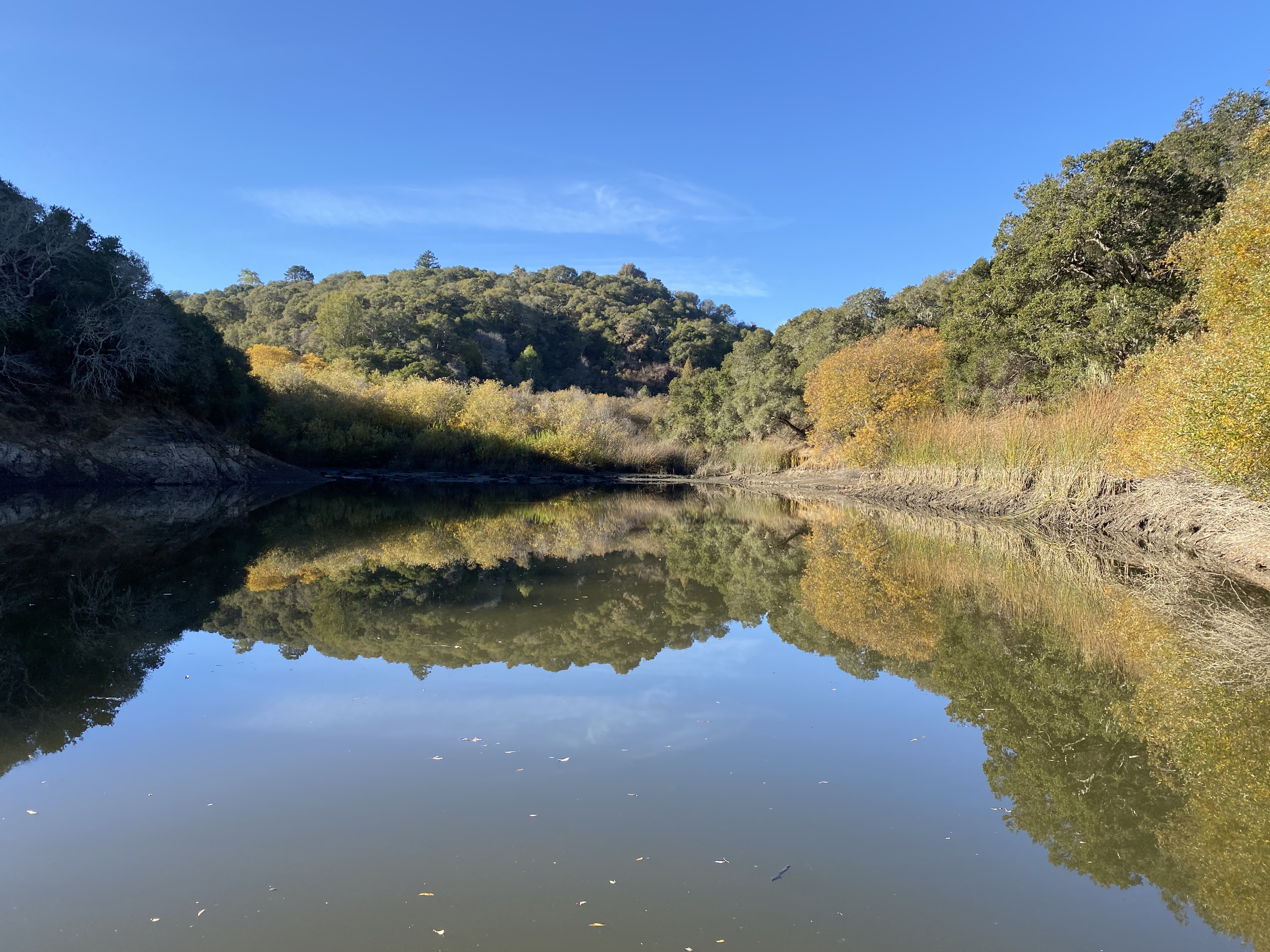
Photo by Naomi Taxay
Driving through the twisted streets of the Belmont hills, a passerby might never notice a secret garden, Waterdog Lake, hidden amidst the suburban neighborhood. The Bay Area city of Belmont is known for its canyons and hills, however, even residents of the neighborhood could easily miss what is concealed within the topography.
Waterdog Lake’s trailhead, (Lake Road Trail) on Lyall Way, is right off of Ralston Avenue, the busiest street that runs through the city. The trail, less than a mile long, is a wide fire road, very well maintained and easy to social distance on. The Lake Road Trail does not abstain from Belmont’s busy nature — frogs, salamanders, snakes and many lizards are frequently encountered going about their day. In the treetops on either side of the path, small birds, including the California Scrub-Jay, Townsend Warbler, Golden-crowned Sparrow and Dark-eyed Junco can be spotted hopping from branch to branch. The branches are covered by a whimsical hanging moss, swaying with the wind.
At the bottom of the fire road, hikers, at last, get a view of the lake nestled at the bottom of a decline, rimmed by the hills of Belmont. Although man-made, the lake has adapted to become a part of the natural life in the canyon and is even home to fish and turtles.
William Ralston, the founder of the Bank of California, owned an estate near Waterdog in the early 1870s and dammed Belmont Creek to create the 100 million gallon reservoir. Ralston, along with the town of Belmont, used Waterdog Lake as their primary source of water for many decades.
Although it was once used as an essential resource, Waterdog Lake now serves many different recreational purposes. Swimming is discouraged in the closed-off lake because the water isn’t very clean, however, many people go fishing in it. There are three benches around the water with beautiful views of the canyon. On the left side of the rocky beach, the remains of a plumbing system for the water supply are attached to a dock that shoots out into the water.
One of my favorite things to do with friends is to walk down the short Lake Road Trail and have a picnic on the square-shaped dock, big enough for a couple of people to sit on. The lake is absolutely beautiful. The water is still and glassy, reflecting the mountains that surround it in vivid color — greens and browns are mirrored with authenticity. Every once in a while a duck or bird will land on the water, creating a rippling spiral that oscillates throughout the lake.
The lake and trails are dog-friendly too! The trails have become a popular spot for morning walks with canine friends or longer afternoon hikes. Dogs love to take a quick dip in the lake to cool off on a hot summer day, which may seem like a no-brainer, given the lake’s name. But actually, Waterdog Lake is named after a breed of salamander that loves to make an appearance around the reserve.
One could make an entire day plan out of hanging out at the lake and turn back around to head home on the Lake Road Trail. However, there are trails on both sides of the beach, branching out into a network that runs throughout Belmont and its neighboring city of San Carlos. The trails are used by walkers, hikers and runners alike and have even become a haven for mountain bikers on the Peninsula — the narrow paths and twisted tree roots create appropriate obstacles for biking.
The trails have another obstacle that makes them unique: old abandoned cars can be found throughout the canyon at the sides of trails and in the middle of them. Not many know how they got there, and they add to the mystery and intrigue of this historical site.
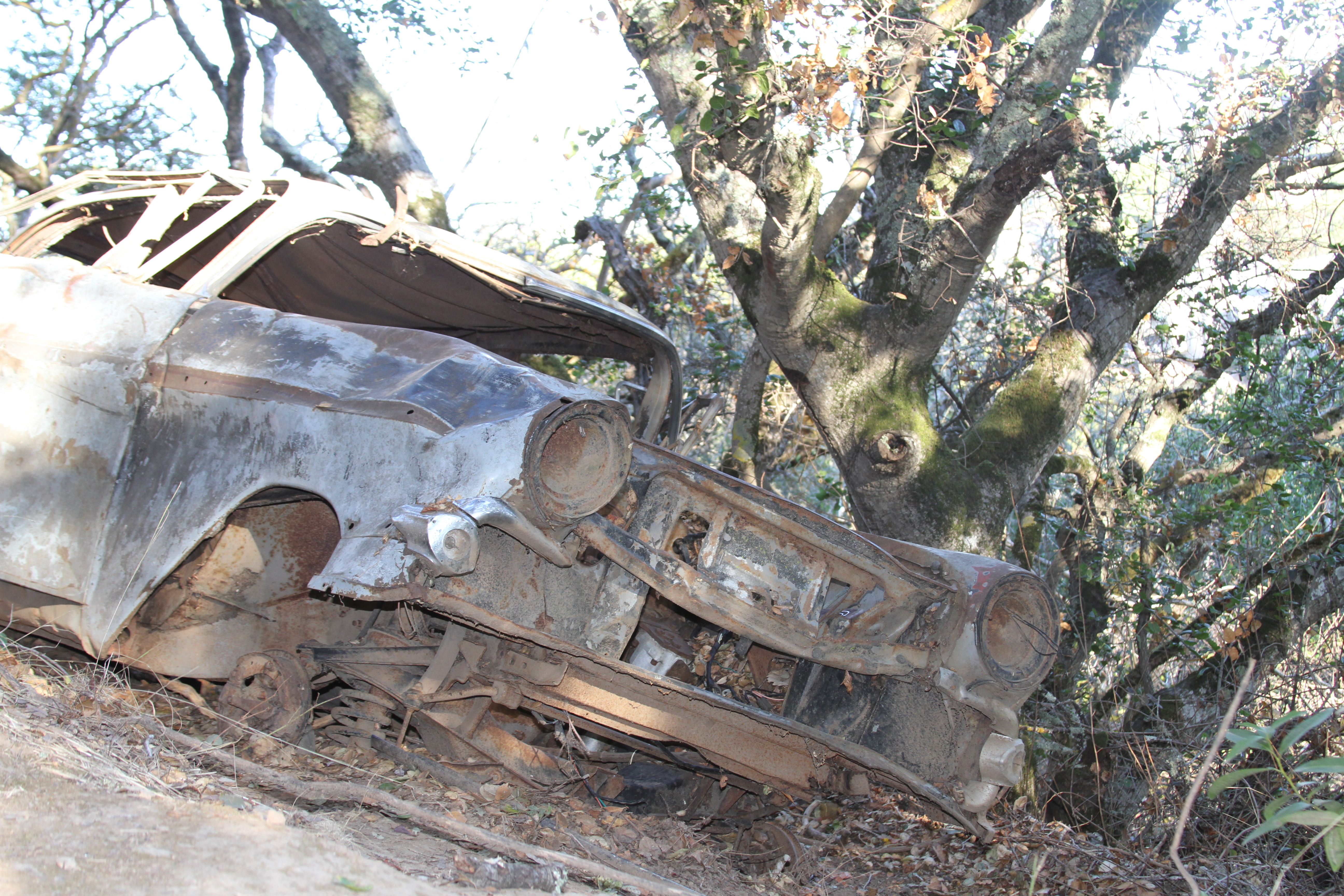
Photo by Naomi Taxay
Long time local resident Ted Albertson does remember the games that led to the mysterious antique cars hidden around Waterdog. He looks back on his time in high school in the early 1960s when an after-school activity they called “Jungle Cruising” became popular. Teens would go to the various auto wreckers along Highway 101 and buy old junk cars for around $25.
“We would bring them home and fix them up enough to drive them, then take them up in the hills. We’d drive them until they died and then just leave them there and walk home,” Albertson recalled. Over time, some of the cars have been removed from the woods. The ones that remain have become a part of the natural environment, growing an array of greenery in and around them.
Some mountain bikers have decided to use the cars as part of the biking trails and have added platforms and rails to turn them into jumps and other obstacles. The cars aren’t only fun for mountain bikers, though. There aren’t any maps that pinpoint the locations or number of them around the trails, so hikers have made it a fun scavenger hunt to try and find as many as they can. It’s difficult — I was only able to find three the last time I ventured into the backwoods of Belmont.
There are many paths around the lake and canyon. The most popular one people add to their short walk to the lake is the Waterdog Lake Loop trail, which goes directly around the lake. If someone wanted a little bit of a longer hike they could instead continue on the Lake Road Trail and get off at Hallmark Drive, or turn around back on the intersecting John Brooks Trail. These choices add about two miles to the hike and offer beautiful views, as pathways range from traveling to the top of Belmont’s hills to the bottom of its valleys. The trails are absolutely stunning. The sun shines brightly above the hills and trees at an angle creating patterned silhouettes on the paths, and shade for hotter days. Although winter is coming and many of the trees are losing their leaves, the autumn browns and oranges continue to peek through the treetops.
Those trails are a bit wider and more popular, but there are many more trails that can be taken from the left side of the lake. The trails meet up with those of San Carlos’ Hidden Canyon Park, where more antique cars can be seen in ditches with bridges running over them. The trails start to get steeper and more narrow around here, but the tree roots form a natural staircase down even the steepest of trails. The sides of the trails are hugged by an assortment of flora. Blue Blossoms, Miner’s lettuce, California Poppies, ferns and grasses in addition to hundreds of other flowers and plants can be found all around the reserve. Be cautious when looking to pick a blackberry from the Trailing Blackberry bushes on the path’s edges — it’s difficult to tell them apart from the Pacific Poison Oak that could be surrounding it.
The backwoods, farther away from the housing areas of Belmont, are the homes of bunnies, rattlesnakes and mountain lions, although the latter make less frequent appearances.
On the way back on the John Brooks Trail, the lake can be seen again through the trees. There are benches around magnificent viewpoints where people can take a break. Trash cans, for dog waste and litter, preserve the trail’s natural beauty. The trail passes the lake and curves back around, ending your hike at Waterdog. If you are up for something longer, you can take another path and choose a second hike — some of the paths lead all the way to San Carlos. If you are ready to head home, you can take the Lake Road Trail (marked with a post so you don’t get lost!) back to Lyall Way.
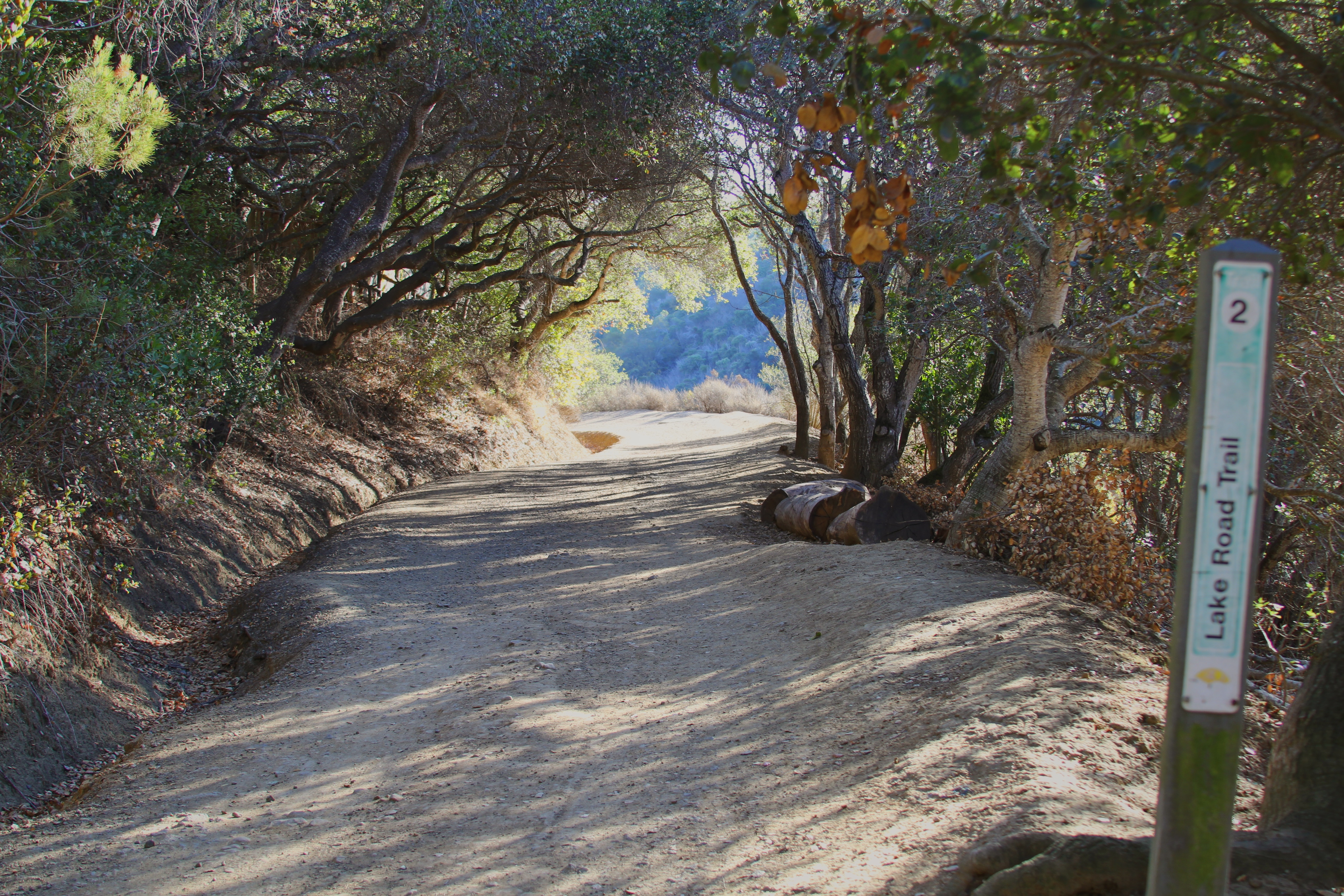
Photo by Naomi Taxay




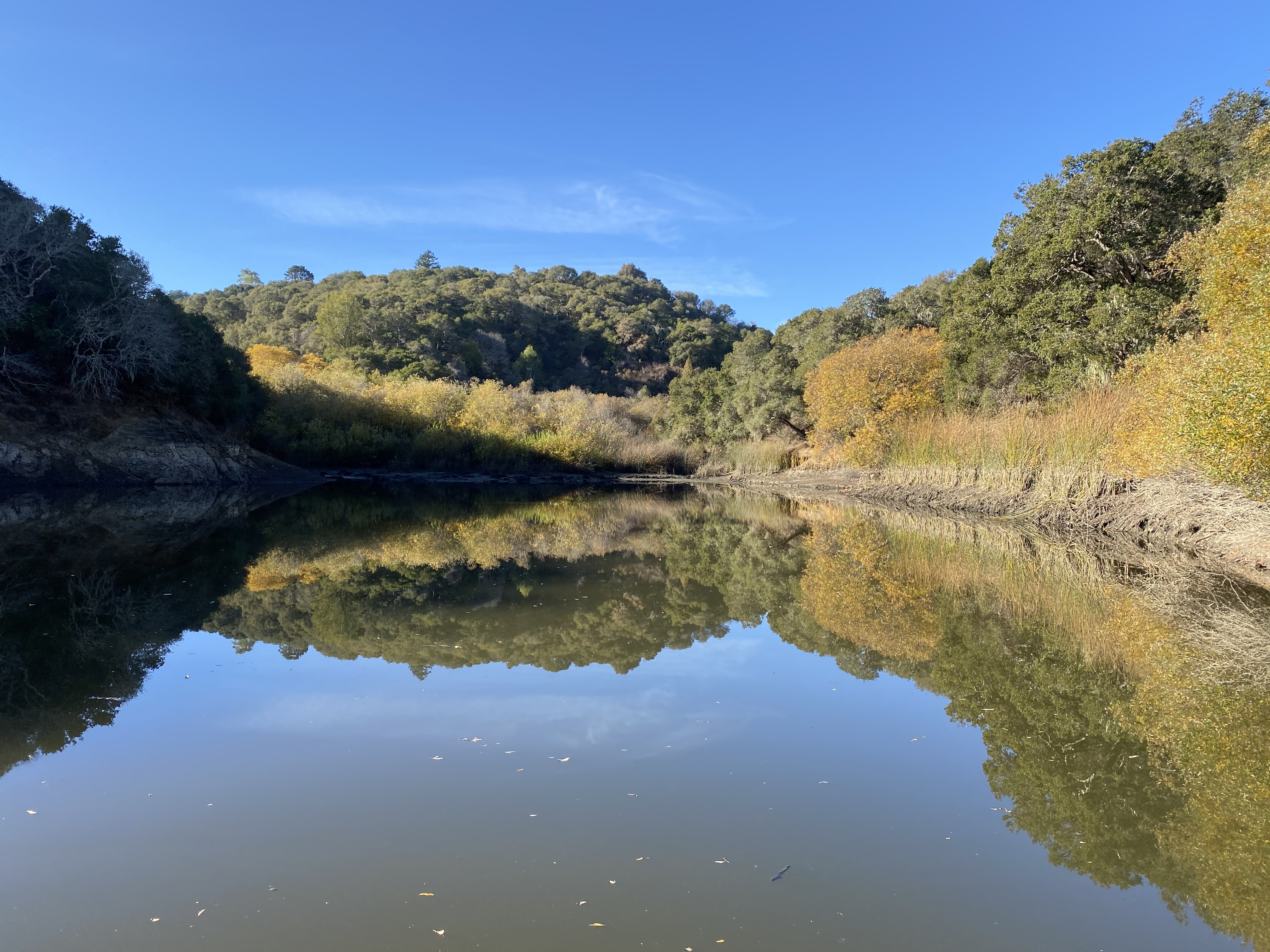
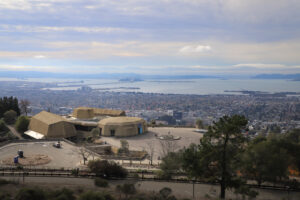


Throughly enjoyed your article! Can’t wait to go visit Waterdog Lake after reading this
Great article! How far is it from the city?